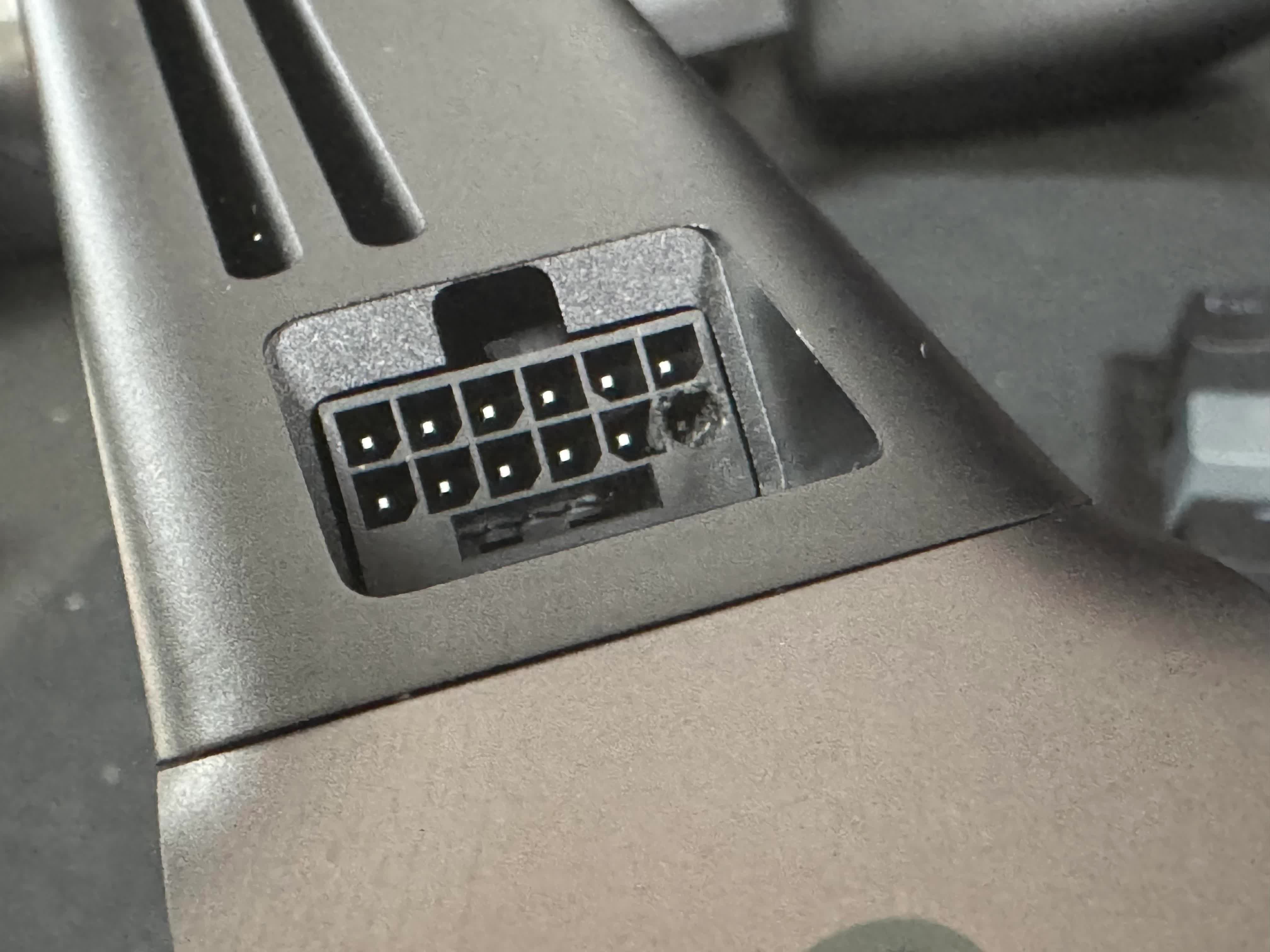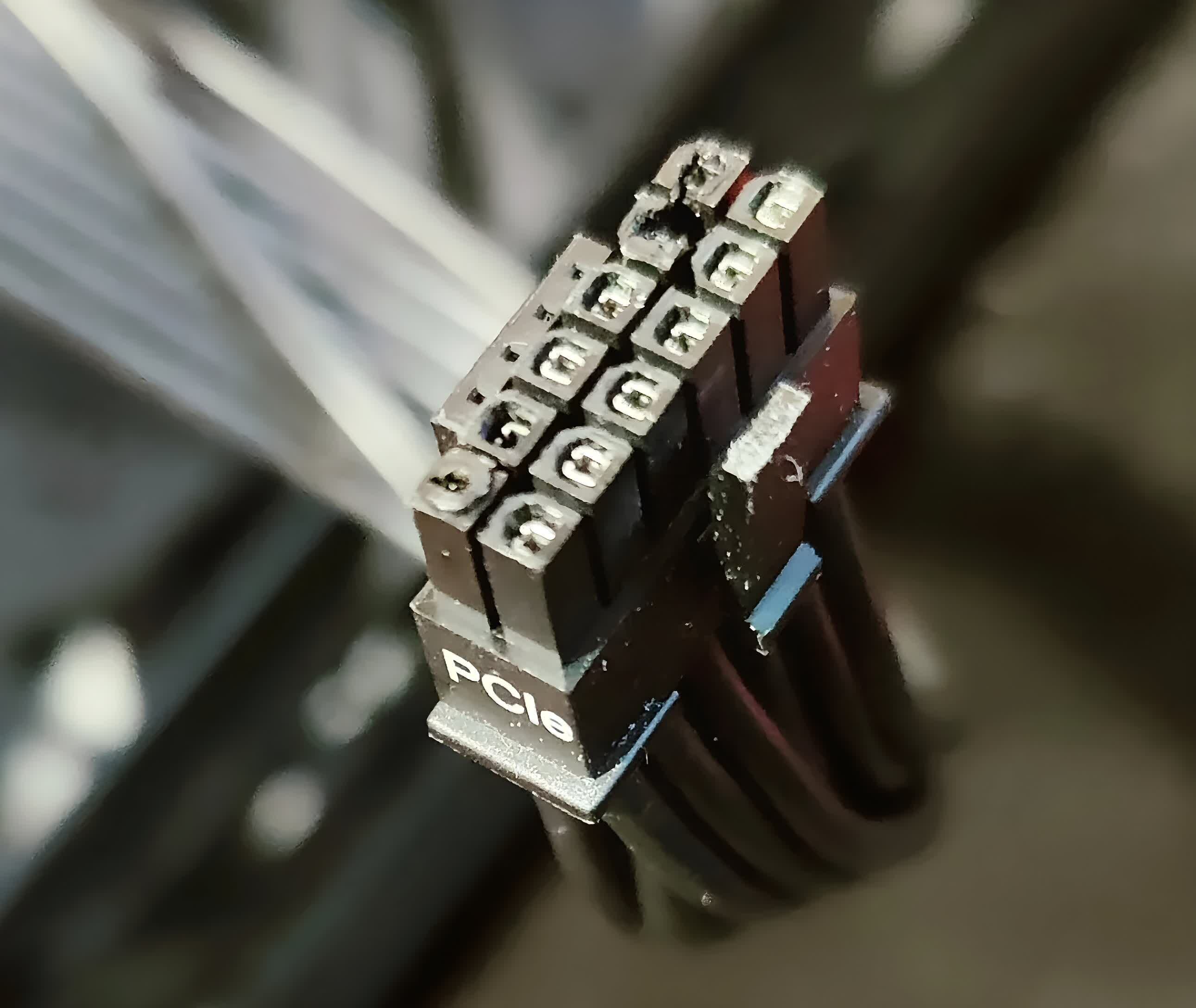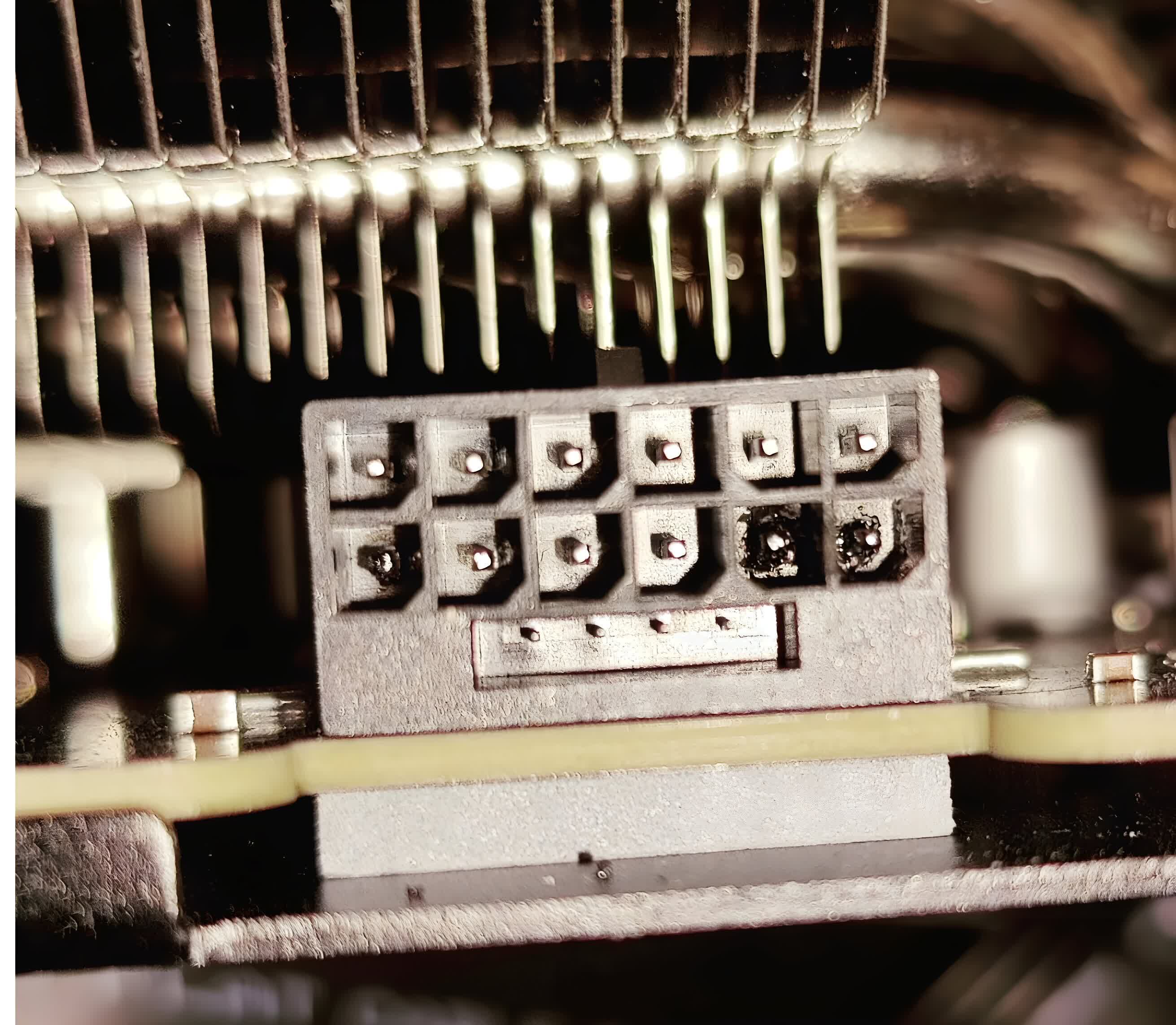Serving tech enthusiasts for over 25 years.
TechSpot means tech analysis and advice you can trust.
Facepalm: Imagine getting ahead of the scalpers and securing a $3,000+ RTX 5090, only for the connectors on the card and cable to melt. There has been yet another one of these incidents reported, with both ends of the 12VHPWR, the card, and the PSU all showing burn damage.
The latest case, reported by a Redditor called Roachard, involved an MSI RTX 5090 Gaming Trio OC. He bought the card from Best Buy about a month ago for just over $3,000 and paired it with a Corsair SF1000L on an Asus Strix B650E-I motherboard. That PSU is an 80 Plus Platinum, ATX 3.0-compliant power supply that sells for $230 on Amazon – not a cheap, underpowered model, basically.
Roachard says the cable was plugged directly into the PSU. No extensions were used and he wasn't overclocking the RTX 5090.
He initially thought the damage was only on the GPU side – both the cable and card connectors – but there was also damage to the PSU end. There's a worryingly large bulge in the connector plugged into the power supply where the plastic has melted, next to a cable that has burned and turned white (masthead image).
There were reports of a cable being used with an RTX 5090 that melted in February. It also damaged both the card (below) and PSU, but it's believed that the issue was partly caused by the cable in question being a third-party model from Moddiy, though the website describes it as an ATX 3.0, PCIe 5.0, 16-pin to 16-pin model supporting up to 600W with the newer 12V-2X6 design.

Roachard says that he used the original 12VHPWR rated for 600W that came with the PSU. He assumed that avoiding third-party cables meant there would be no issues, but apparently not.
There have been several cases of RTX 5090 cables/connectors and PSUs melting, and at least one involving an RTX 5080. While there have only been a handful of these instances, it brings to mind the more widespread similar issues with the RTX 4090. Most of those were due to the 12VHPWR cable not being fully inserted as it was too stiff, leading to the updated 12V-2x6 cable design.
Earlier this year, overclocker Der8auer replicated the setup of one of these RTX 5090 melting incidents using a Corsair 12VHPWR cable. The cable's connectors reached 150°C on the PSU side and close to 90°C on the GPU side. The problem was an uneven distribution of power: two wires designed to carry 5 to 6 amps of current were carrying more than 20 amps each, while some cables carried as little as 2 amps.











 English (US) ·
English (US) ·